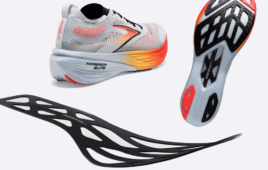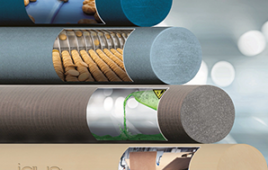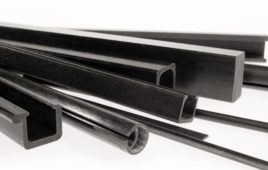By Ted Ahrenholtz, Design Engineer, Minnesota Rubber And Plastics
Engineered components, when combined into assemblies, can advance a product’s performance as they have in today’s highly efficient and reliable automobiles. New standards are set when individual components are redesigned into more efficient assemblies leading to improved performance. Such is the case with vehicles of all types as most components, such as shock absorbers, are redesigned of new, lighter materials that last longer and are more cost effective to manufacture.

Hundreds of assemblies make up today’s efficient automobiles. The continuing redesign of these assemblies using new materials and new manufacturing processes improve vehicle performance. This redesign dynamic is true for almost every product in daily life from computers to wrist watches. Separate components often are combined into a single assembly to perform multiple functions.
Materials and their design play a major role in these newly designed assemblies. From everyday products such as computers to medical devices and appliances, assemblies are including less visible products, such as chemical pouring devices. Product engineers are discovering new and better ways to achieve assemblies that enhance the function and marketability of their products through the specialized capabilities of elastomer and thermoplastic materials.
The following assembly examples, from relatively simple to very complex, demonstrate important benefits setting them apart from earlier designs.
1. Floating shock absorber piston assembly improves hydraulic function with more efficient sealing, allowing automation of its manufacturing process.
Replacing traditional materials with higher performance materials is one way to improve assembly designs. In this instance, aluminum was replaced with a high performance plastic (HPP) component body and then integrated with a proprietary elastomer Quad-Ring seal. Molded of a glass-filled, specially formulated, heat stabilized Nylon, these redesigned pistons improved sealing and overall hydraulic function. Changing material from aluminum to HPP material also eliminated secondary de-flashing operations on the groove that position and hold the seal.

Floating shock absorber pistons changed from aluminum to specially formulated heat-stabilized nylon with Quad Ring HNBR seal.
New to this assembly design was the integrated Quad-Ring seal that fits securely inside the shock absorber bore. The 1 3⁄4 in. diameter floating pistons depend on this seal for reliable and trouble-free operation so it has to fit securely inside the shock absorber bore. The hour glass contour of the seal ensures that it fits securely within the piston’s 1⁄8-in. groove avoiding twisting during operation while separating the gas-charged portion of the bore from the oil portion, sliding up and down smoothly and efficiently when in operation.
The seal material enhances the assembly’s function because it is precision molded from a specially formulated HNBR elastomer designed for high concentricity, low friction, and long operating life. This application involves speeds to 900 fpm (4.5 m/sec) and maximum pressures of 750 psi (52 bar). Quad-Ring seals of this type have become standard designs on many types of vehicular hydraulic systems.
To make this piston/seal assembly design as cost effective as possible, the manufacturing and assembly process was engineered to meet high volume production requirements. This process contrasts with the previous, more labor-intensive, aluminum piston manufacturing process where several secondary operations with hand labor were required. With minimal operator involvement of the new design, an automated part handling system moves the injection-molded pistons into position for assembly with the seals. During the assembly process, a small amount of silicone lubricant is automatically applied to the seal. Once assembled, the vision system inspects for dimensional accuracy and ensures that the seals are positioned correctly within the piston’s groove. The automated production system operates 24/7 with output capacity in the millions of assemblies per year.
2. Automotive back-up light designed as a snap-fit assembly to eliminate fasteners and welding.
This sport utility back up light was designed to minimize material requirements and the number of molded components while simplifying the assembly process. Key to the design is how the snap fit molded components eliminate all fasteners and welding operations.
This dual function back-up/utility light plugs directly into any 7-way standard 7 pin round RV/trailer receptacle. Producing 50 W of very bright white light, it provides extra light behind a vehicle when needed—for loading the vehicle, plowing snow, setting up camp or hooking up a trailer.

Back-up light molded assembly snap-fits components together, eliminating fasteners and welding operations.
To design a robust, corrosion and wear resistant assembly, the base was manufactured from injection molded nylon. The molded features allowed rotation of the light into either of two operating modes—backup light when the vehicle is shifted into reverse and utility light mode when parked. The dual function design adds value to the product and is regulated by a special micro switch mounted inside the light’s base. When the base elements are turned, a small molded-in key actuates a micro switch, changing the selected operating mode. The two rotating base components have a special O-ring seal (EPDM-ethylene propylene diene monomer) that facilitates smooth rotation and also acts as a barrier to seal out moisture and dirt.

The lens is molded of polycarbonate material that effectively magnifies and disperses the 50-W halogen light (1,000,000 measured candle power) over a wide area behind the vehicle. The lens is threaded around its circumference and screws tightly into the threaded base. This allows easy bulb replacement when necessary. For added moisture and contaminant protection, a flat EPDM rubber gasket seals the screwed together lens and base. Inside, a hard chrome plated reflector, stamped from cold rolled steel, holds a standard halogen bulb socket. This socket connects two glass insulated, high-temperature resistant wires which lead to the vehicle’s connecting receptacle.
The unique design provides small “fingers” strategically positioned in the interior that locate, snap together and lock components tightly without the need for fasteners or welding. The micro switch is heat staked permanently into position so it does not require fasteners. For ease of use, the base has an external keyway for aligning and installing easily even in low-light conditions. A locking cleat provides positive retention.
Measuring 6 in. long with 15⁄8 in. base receptacle and a 3 in. diameter lens, the light has no external connecting cords or wires, weights only 8 oz and stores anywhere in a vehicle including a small glove box.
3. Economic plastic valve assembly is three products in one.
Designing a product assembly that functions as three products in one can be especially challenging. This plastic valve for use in standard 55 gallon chemical drums replaces and serves as a (1) screw-in plug, (2) fluid dispensing pump and (3) security valve to prevent accidental spills and product tampering.
Designing it for manufacturing required CAD modeling and simulation testing, prototyping, elastomer, and high performance plastics customization and automated manufacturing system design. The biggest challenge was to develop a robust assembly design with a highly reliable sealing function that could handle all types of storage, long-term usage with most commodity chemicals and do this at a wide temperature range.

Newly designed assembly is three products in one—a plug, a pump and a valve.
Concept development included traditional methods for modeling prototypes and machining components out of polyethylene bar stock. Components were screwed together, tested for function and reworked as needed until an acceptable operating prototype was arrived at that met the features and benefits criteria.
CAD models were produced using IDEAS software with the final design consisting of two assemblies. The valve (which also performs as the bung in the drum) has three plastic injection molded components and five rubber molded seals. The coupler has six injection molded components and five rubber molded seals. A major design challenge was identifying the correct resin formulations for the components that were compatible with the two classes of elastomer formulations developed for the seals, an EPDM and a fluorocarbon series of formulations. The formulation series was necessitated to handle the various chemicals that the valves would be used with.
The resins selected also needed to support design elements for welding and assembly of the plastic components as well as the tolerance requirements so groove paths and sealing surfaces were fail safe. Designs exceeded testing requirements accomplished with pre-production quantities.
Operation is straightforward. The valve assembly threads into the drum and performs the sealing function. The coupler inserts into the top of the valve for dispensing. The coupler rotates 360° allowing dispensing in any direction. The threaded nozzle connects easily to machinery such as fertilizer applicators and food ingredient mixing systems. The spout at the bottom of the valve body connects to a standard dip tube to reach the drum bottom.
A “lock and key” design feature prevents accidental spills and guards against incorrect usage. A series of 12 colors represent key profiles allowing the user to differentiate a range of chemicals in similar containers making them easier to identify and dispense. While each key is different, each operates on the same sealing principal to prevent cross contamination, unwanted worker exposure and environmentally hazardous spills.
Finding a qualified source for a new assembly design is a necessity
Developing the right design and material is crucial to ensure the highest performance level of an assembly while lowering cost. Each of the above products was designed for ease of assembly using automation and less human interaction to minimize costs.
Equally important is the use of an assembly source that provides the latest technology for designing and manufacturing new assemblies. These techniques include computer aided design, finite element analysis, mold design and build along with high-speed, automated molding, assembly and packaging for just-in-time delivery.
Minnesota Rubber and Plastics
www.mnrubber.com
Filed Under: Automotive, Materials • advanced





Tell Us What You Think!